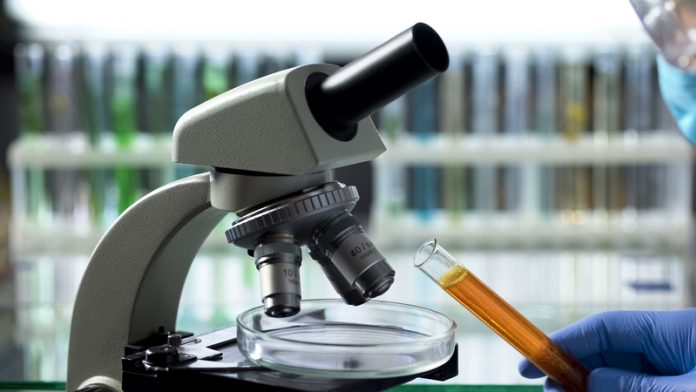Alberto Mantovani discusses emerging health and environmental risks we are now facing, with a focus on toxicological risk assessment
Alomost one year ago,on December 2018 the Scientific Committee on Health, Environmental and Emerging Risks (SCHEER) of the European Commission – DG SANTE published a document that would be expected to stir interest and debate.
The “Statement on emerging health and environmental issues” identified and reviewed the potential environment-health priorities of the near future, considering the novelty of the stressor or process, the scale and severity of possible impacts and the anticipated increasing importance over time.
Some emerging issues -like do-it-yourself synthetic biology, gene editing to control pests or virtual reality- are of high interest for the future of our living environment, however, they are out-of-scope for this series of articles which aims at discussing chemical toxicological risks and their governance. Micro and nano-plastic in the environment from urban and industrial waste are also included in the list of emerging problems: since the (insufficiently characterised) effects on environmental organisms are mostly physical or behavioural (feeding changes), also micro/nanoplastics will not be discussed here.
What emerging issues are directly relevant to toxicological risk assessment?
– E-cigarettes, introduced in the early 2000s e-cigarette may expand and become ”fashionable”, especially among adolescents. In the meanwhile this habit may bring about a significant exposure to nicotine, as well as to other chemicals including poorly investigated flavourings as well as metals. In addition, there is no consistent evidence on the benefits of using e-cigarettes to reduce health harms related to tobacco smoking, nor on potential health risks compared to no smoking. It is definitely a case for science-based risk-to-benefit assessment.
– Drinking water disinfection by-products. New and modified drinking water treatments, such as advanced oxidation processes, are being used to remove contaminants; this development is fostered by climate changes which may lower the availability of clean water sources. It is recognised that disinfection methods interact with substances in water, leading to by-products. Thus, new treatment methods should be assessed on the basis of their effectiveness as well as of the toxicological hazards and exposure due to novel disinfection by-products.,
– Nanoparticles from Building Materials. Nanomaterials (titanium dioxide, silver, carbon nanotubes etc.) are found in a number of construction products, e.g., surface coatings, concrete, insulation. Environmental release may occur during crumbling, renovation or demolition processes and/or recycling, land-filling and incineration technologies. The toxicology and ecotoxicology of nanoparticles still present many uncertainties and exposure scenarios from building materials should be built-up: a characterisation of risk should then support new, ad hoc regulations.
– Pharmaceuticals and illicit drugs: their loads in wastewater increase as a result of increased use of legal, illicit and counterfeit drugs and of population ageing. Wastewater treatments may not completely remove drug and their metabolites and by-products, whose occurrence in surface waters is recognised since the 1990s. However, knowledge on the hazards for ecosystems is largely incomplete; scientific tools should also characterise adverse effects related to pharmacodynamic activities, such as endocrine or neurobehavioural (e.g. from antidepressants). Residues in organisms used for human food and spread of antibiotic resistance may pose concerns also for human health.
– Per- and polyfluorinated alkyl substances (PFAS): widespread in the environment, very persistent, yet, still receiving limited attention by regulators. The recent assessment of PFOS and PFOA by EFSA (2018) pointed out concerns for adverse effects on metabolic, immune and reproductive functions as well as for dietary exposure; however, many more emerging PFAS await evaluation. Since PFAS are found concurrently in the same environmental matrices (eg, water bodies) and food chains (eg, seafood, game), mixture effects must be investigated. Replacements by industry mainly rely on fluorine chemistry (e.g. GenX) which leads to similar persistence problems.
Other, broader, and actually even more enticing topics, pivot on some envisaged changes of our views of toxicological risks
– The issue of PFAS recalls the more general question of persistent, mobile and toxic substances. A number of diverse polar contaminants remain unchanged in water bodies throughout the passages to groundwater and drinking water treatment processes, such as the already quoted PFAS “substitute”, GenX. The environmental concentrations of this kind of persistent pollutants will increase over time due to circulation and enrichment in the water cycle: they do not bioaccumulate very much but are very difficult to remove. Indeed, the identification and assessment of persistent, mobile and toxic substances might be a novel additional aspect in the REACH legislation on chemicals.
– Chemicals in recycled materials, an issue that might complicate the EU-wide strategies toward a circular economy. Interest in the circular economy and therefore in recycling has increased considerably. One problem is that the recycled products and materials may contain hazardous substances that pose risks to the environment, consumers, and/or workers. Examples are flame retardants, lead, cadmium, phthalates, polycyclic aromatic hydrocarbons; materials at risks include plastics, rubber wire, polystyrene and e-waste. The possible advantages of recycling (more energy-efficient and CO2-efficient production) should be weighed against potential risks; in particular, while hazards from these substances are identified, exposure scenarios from recycled materials should be modelled.
– Microbiome has a modulating role between environmental factors and the health status; changes in the human microbiome are being linked to a broad array of health disorders, including neurological, oncologic and auto immune conditions. Important scientific efforts are most welcome to better characterise the inter-relationships among exposure to environmental stressors, microbiome changes and onset of adverse health effects. Research on the structure and function of the human microbiome is making great progress: but, how the microbiome interacts with the chemicals we are exposed to through foods, air, skin? Has the microbiome a role in modulating age- and gender-susceptibilities to toxicants?
The issues raised by the SCHEER pose relevant questions to scientific institutions, research-funding bodies, regulatory authorities and, last but not least, policy makers.
We hope that science and society will be able to take the challenge.
Written by Alberto Mantovani, Istituto Superiore di Sanità, Roma, Italy








